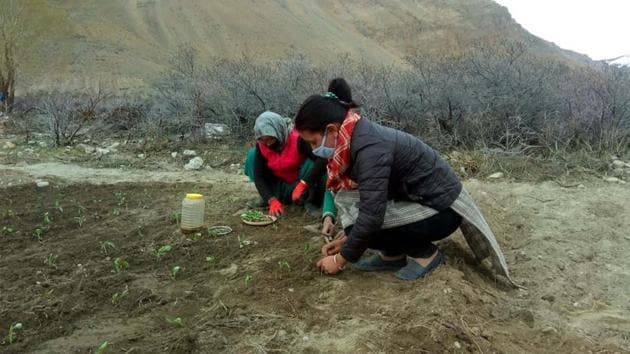Tribals in Spiti valley opt for self-governance in the wake of Covid-19 pandemic
Locals say the valley doesn’t have adequate health facilities to cope with an outbreak, have banned entry of non-locals and labourers, taken to traditional farming
In the wake of the coronavirus pandemic, residents of Spiti in Himachal’s Lahaul-Spiti district have imposed self-governance and are following their own set of guidelines to ensure the valley remains corona-free.

On June 9, villagers in Spiti valley did not allow local legislator and agriculture minister Ram Lal Markanda from entering the valley. While the minister termed the protest against him ‘politically motivated’, locals say Markanda was denied entry in a bid to protect the valley and its people from the deadly contagion, as the valley lacks adequate health services.
JOINT COMMITTEE FORMED
While the Centre only imposed the lockdown on March 24, Spiti valley had begun formulating strategies, raising awareness and holding discussions about the novel coronavirus in February 2020.
On March 17, locals formed a ‘committee for preventive measures and sustainable development’ (CPMSD) comprising yuva mandals, mahila mandals, local panchayats, gram sabhas, social action groups and lamas from five monasteries.
The committee decided to shut all hotels, dhabas, and transport services in the area before the national lockdown was imposed.
The entry of non-locals was barred and a 15-day quarantine period was made mandatory for people of the valley coming from outside. The entrance to the valley is guarded by locals and the committee issued guidelines regarding arrangements to be made for home quarantine. The locals also monitored the arrival essentials such as LPG, diesel, petrol, fuel wood, and vegetables from outside the district.
“As we are located in a remote and cold desert area, which is also a tourist hotspot, we realised we were vulnerable to the disease,” said a local, requesting anonymity.
COMMERCIAL FARMING PUT ON HIATUS
“We banned labour from outside and farmers decided to grow traditional crops instead of commercial crops even if it translated into losses,” said CMPSD member Lhmo Buitith.
The locals have also urged the government to stop HRTC bus services from plying in the area.
“CMPSD has ensured that all rules and guidelines are applicable to all people without any bias or discrimination,” said Buitith.
“It is difficult to maintain physical distance due to heavy dependence on community due to shared lifestyle and livelihood practices in the tribal area,” Buitith said.
“Separating elders and children was difficult as in most families three or four generations live together,” said Buitith.
SPECIAL STATUS IN CONSTITUTION
Scheduled areas and tribes have been given special status in the constitution of India. The 73rd constitutional amendment and provisions of different acts confer powers on the local communities through gram sabhas to take decisions to protect its area, resources, livelihoods and cultural and social existence.
“At the time of such an unprecedented crisis, it is not just necessary for us to take steps to ensure our safety but also completely legitimate. Public health experts and the government’s ICMR Task Force has clearly said that the policy of lockdown should not be ‘one size fits all’, but rather be implemented according to local context,” said CMPSD member Lhmo Buitith.
“The people of Spiti, to secure and protect their existence, have decided to postpone their regular means of income such tourism and commercial farming for a whole year as such it is the moral duty of the government and its representatives to cooperate with the locals,” Buitith said.
The tribal community, which has a population of 13,000 spread across 30 villages, has also been concerned about protecting its existence, ethnic and cultural heritage, which has evolved over the years.




